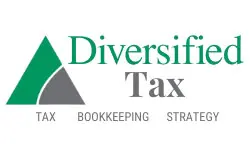How to File Back Taxes
How to File Back Taxes
Filing taxes is an essential responsibility for every taxpayer. However, life can sometimes get in the way, and you may find yourself with unfiled tax returns from previous years. If you’re in this situation, it’s crucial to take action and file your back taxes as soon as possible to avoid penalties and interest charges. In this extensive guide, we will walk you through the process of filing back taxes, including important steps, considerations, and options for those who cannot afford to pay their tax liability.
What Are Back Taxes?
Before delving into the process of filing back taxes, it’s important to understand what back taxes are. Back taxes refer to unpaid federal or state tax liabilities from previous years. Each year, taxpayers are required to file their income tax returns by the designated deadline, typically April 15th. Failure to file your tax return on time can result in accumulating back taxes. It’s important to note that even if you are not required to file a tax return due to low income, you may still need to file to claim refundable tax credits or receive a tax refund.
Why Should You File Back Taxes?
Filing back taxes is a crucial step to take, even if you missed the deadline or didn’t file a return for several years. There are several reasons why you should file your back taxes:
Avoid Penalties and Interest
When you fail to file your taxes on time, the IRS imposes penalties and interest on the amount owed. These penalties can accumulate over time, making your tax debt grow significantly. By filing your back taxes, you can limit the penalties and interest charges and take control of your tax liability.
Claim Potential Refunds
If you’re due a tax refund for any of the years you haven’t filed, you won’t receive it until you file the corresponding tax return. By filing your back taxes, you can claim any refunds you may be entitled to. It’s essential to note that the IRS may only issue refunds for tax returns filed within three years of the original due date.
Maintain Good Standing with the IRS
Filing your back taxes demonstrates your willingness to comply with tax laws and maintain good standing with the IRS. By proactively addressing your tax obligations, you can avoid potential legal consequences and maintain a positive relationship with the tax authorities.
How to Retrieve Your Tax Documents
Before you can begin the process of filing your back taxes, you’ll need to gather your tax documents from the corresponding years. Here are some ways to retrieve your tax documents:
Option 1: Request Tax Transcripts from the IRS
If you need copies of your tax forms or other tax-related documents, you can request tax transcripts from the IRS. A tax transcript is a summary of your tax return information, including income, deductions, and tax payments. You can request tax transcripts online through the IRS website or by mail using Form 4506-T.
Option 2: Contact Your Employer
If you’re missing W-2 forms from previous years, you can reach out to your former employers and request copies. Employers are required to keep records of their employees’ W-2 forms for at least four years. Be sure to provide them with your correct contact information and any relevant details to facilitate the process.
Option 3: Contact Your Financial Institutions
If you received income from interest, dividends, or investments, you may need to retrieve Form 1099 from your financial institutions. Contact your banks, brokerage firms, or other financial institutions to request copies of these forms. They will be able to provide you with the necessary information to include in your back tax returns.
Gathering the Necessary Information
Once you have obtained your tax documents, it’s time to gather all the necessary information to complete your back tax returns. Here are some key pieces of information you’ll need:
Personal Information
- Full legal name
- Social Security number (SSN) or Individual Taxpayer Identification Number (ITIN)
- Date of birth
- Filing status (single, married filing jointly, married filing separately, head of household, qualifying widow(er))
Income Information
- Wages, salaries, and tips reported on W-2 forms
- Self-employment income and expenses (if applicable)
- Income from rental properties or investments
- Social Security benefits
- Retirement income (pensions, annuities, IRA distributions, etc.)
- Unemployment compensation (if applicable)
Deductions and Credits
- Mortgage interest and property tax payments
- Student loan interest payments
- Medical expenses
- Charitable contributions
- Education-related deductions and credits
- Child and dependent care expenses
- Earned Income Tax Credit (EITC)
- Child Tax Credit (CTC)
- Additional Child Tax Credit (ACTC)
- Other eligible tax credits or deductions
Make sure to have accurate and detailed records for each category to ensure the accuracy of your back tax returns.
Understanding Relevant Tax Forms
To file your back taxes accurately, you’ll need to familiarize yourself with the relevant tax forms for each year. The specific forms you need will depend on your income sources, deductions, and credits. Here are some common tax forms you may encounter:
Form 1040
Form 1040 is the standard individual income tax return form. It is used to report your income, deductions, and credits. The form may vary from year to year, so it’s important to use the correct version for each tax year you’re filing.
Form 1040A and Form 1040EZ
Form 1040A and Form 1040EZ are simplified versions of Form 1040 for taxpayers with less complex tax situations. These forms have specific eligibility requirements, so make sure to review the instructions for each form to determine if you qualify to use them.
Schedule A
Schedule A is used to report itemized deductions, such as mortgage interest, property taxes, medical expenses, and charitable contributions. If you choose to itemize deductions instead of taking the standard deduction, you’ll need to complete Schedule A and attach it to your Form 1040.
Schedule C
Schedule C is used to report self-employment income and expenses for individuals who operate a sole proprietorship or are self-employed. If you earned income from a business or freelance work, you’ll need to complete Schedule C and attach it to your Form 1040.
Other Forms and Schedules
Depending on your specific tax situation, you may need to complete additional forms and schedules, such as:
- Schedule B: Interest and Ordinary Dividends
- Schedule D: Capital Gains and Losses
- Schedule E: Supplemental Income and Loss
- Schedule SE: Self-Employment Tax
- Form 8862: Information to Claim Earned Income Credit After Disallowance
Review the instructions for each form to determine if you need to include them with your back tax returns.
Filing Back Taxes: Step-by-Step Guide
Now that you have gathered all the necessary information and familiarized yourself with the relevant tax forms, it’s time to start filing your back taxes. Here is a step-by-step guide to help you through the process:
Step 1: Organize Your Financial Records
Before you begin filling out tax forms, it’s essential to organize your financial records and sort them by tax year. Separate your income documents, deductions, and any other relevant paperwork for each tax year you’re filing. This will help ensure that you have all the necessary information readily available as you complete your tax returns.
Step 2: Determine the Appropriate Tax Forms
Based on your income sources, deductions, and credits, determine the appropriate tax forms for each tax year you’re filing. Refer to the IRS website or consult a tax professional if you’re unsure which forms to use.
Step 3: Fill Out Your Tax Forms
Using the information you gathered, complete the required tax forms for each tax year. Take your time to ensure accuracy and double-check all entries. If you need assistance, consider using tax preparation software or consulting a tax professional.
Step 4: Submit Your Tax Return
Once you have completed your tax forms, it’s time to submit your back tax returns. Unlike current-year tax returns, you cannot e-file back tax returns. You must print and mail each tax return separately to the appropriate IRS address for the corresponding tax year. Be sure to include any payment owed with each return, if applicable.
Keep copies of your tax returns and any supporting documents for your records. It’s also a good idea to send your tax returns using certified mail with a return receipt to have proof of delivery.
Paying Back Taxes: Options and Considerations
If you owe back taxes and are unable to pay the full amount immediately, you have several options available to address your tax liability. It’s important to explore these options and choose the one that best suits your financial situation. Here are some options and considerations:
Option 1: Full Payment
If you have the means to pay your back taxes in full, this is the best course of action. By paying the full amount, you can avoid penalties and interest charges. Consider using electronic payment methods, such as direct debit or credit card, to ensure timely and secure payment.
Option 2: Installment Agreement
If you cannot afford to pay your back taxes in full, you may be eligible for an installment agreement. An installment agreement allows you to make monthly payments over an extended period of time until your tax debt is fully paid. To request an installment agreement, you can use the Online Payment Agreement tool on the IRS website or complete Form 9465 and mail it to the IRS.
Option 3: Offer in Compromise
In some cases, taxpayers may qualify for an offer in compromise (OIC), which allows them to settle their tax debt for less than the full amount owed. An OIC is generally accepted if the IRS determines that it is unlikely to collect the full tax liability. However, qualifying for an OIC can be challenging, and it’s recommended to seek professional help to navigate the process.
Option 4: Currently Not Collectible Status
If you are experiencing financial hardship and are unable to pay your back taxes, you may qualify for currently not collectible (CNC) status. While in CNC status, the IRS temporarily suspends collection actions against you. To request CNC status, you’ll need to provide detailed financial information to demonstrate your inability to pay.
It’s important to note that regardless of the option you choose, interest and penalties will continue to accrue on your unpaid tax debt until it is fully paid.
Consequences of Not Filing Back Taxes
Failing to file your back taxes can have serious consequences. Here are some potential repercussions:
Penalties and Interest
The IRS imposes penalties and interest on unpaid taxes. The failure-to-file penalty can be as high as 25% of the unpaid tax amount, while the failure-to-pay penalty is 0.5% per month of the unpaid tax. Additionally, interest accrues on the outstanding tax debt. By filing your back taxes, you can limit the accumulation of penalties and interest charges.
Inability to Obtain Loans or Financial Aid
Having unfiled back taxes can negatively impact your financial standing. It may affect your ability to secure loans, such as mortgages or car loans, and may also hinder your eligibility for federal financial aid for education.
Collection Actions by the IRS
If you do not address your back taxes, the IRS may take collection actions against you. This can include placing a lien on your property, garnishing your wages, or levying your bank accounts. Collection actions can have a significant impact on your financial well-being and should be avoided.
To mitigate these consequences, it is crucial to address your back taxes promptly and take the necessary steps to file and pay your tax debt.
Seeking Professional Help
Filing back taxes can be complex, especially if you have multiple years to catch up on or if your financial situation is complicated. Consider seeking professional help to ensure accuracy and explore all available options. Here are two professional options to consider:
Tax Attorneys
Tax attorneys specialize in tax law and can provide expert guidance on filing back taxes, negotiating with the IRS, and resolving complex tax issues. They can help you navigate the process and ensure that your rights are protected.
Certified Public Accountants (CPAs)
CPAs are trained professionals who can assist with tax preparation, planning, and compliance. They can help you file your back taxes accurately, identify potential deductions and credits, and provide advice on tax strategies.
When choosing a professional, consider their experience, credentials, and reputation. It’s important to work with someone who has expertise in dealing with back taxes and can provide you with the best possible guidance.
Tips for Avoiding Future Back Taxes
Once you have filed your back taxes, it’s important to take steps to avoid finding yourself in the same situation in the future. Here are some tips to help you stay on top of your tax obligations:
Stay Organized
Maintain a system for keeping track of your financial records, including income statements, receipts, and tax forms. This will make it easier to prepare your tax returns and ensure that you don’t miss any important deadlines.
File an Extension if Needed
If you anticipate that you may not be able to file your tax return on time, consider filing for an extension. An extension will give you additional time to gather your documents and complete your tax return without incurring penalties for late filing.
Seek Professional Guidance
If you have a complex tax situation or anticipate significant changes in your income or deductions, consider consulting a tax professional. They can help you navigate the tax code, identify potential tax-saving opportunities, and ensure compliance with tax laws.
By taking proactive steps and staying informed about your tax obligations, you can avoid the stress and financial burden of back taxes.
Conclusion
Filing back taxes may seem overwhelming, but with the right approach and guidance, you can successfully navigate the process. Remember to gather all necessary documents, choose the correct tax forms, and accurately complete your tax returns. If you are unable to pay your tax debt in full, explore the available options for payment plans or settlement agreements. Seeking professional help can provide valuable expertise and ensure compliance with tax laws. By addressing your back taxes promptly and staying on top of your tax obligations, you can protect your financial well-being and maintain a positive relationship with the IRS.
Remember, this guide is intended for informational purposes only and does not constitute professional tax advice. Consult a tax professional for personalized guidance based on your specific tax situation.




